 1. Pre-coated aluminium or steel strip arrives at the can manufacturing plant in large coils or sheets.
1. Pre-coated aluminium or steel strip arrives at the can manufacturing plant in large coils or sheets.
预涂的铝或钢制薄板以卷材或片材的形式运到制罐厂
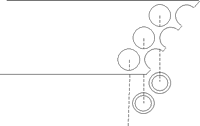 2. The sheet is fed through a press which stamps out thousands of ends every minute.
2. The sheet is fed through a press which stamps out thousands of ends every minute.
片材通过压机每分钟压出数千个圆片
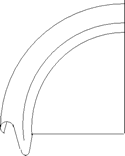 3. At the same stage the edges are curled.
3. At the same stage the edges are curled.
在同一工序盖片折出边缘
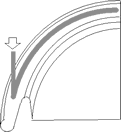 4. The newly formed ends are passed through a lining machine which applies a very precise bead of compound sealant around the inside of the curl.
4. The newly formed ends are passed through a lining machine which applies a very precise bead of compound sealant around the inside of the curl.
罐盖通过一个加衬机在每个盖子的卷边里精确地加入一个复合物的密封条
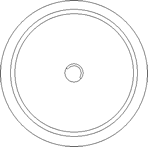 5. A video inspection system checks the ends to ensure they are perfect.
5. A video inspection system checks the ends to ensure they are perfect.
一个视频检测系统被用来检查罐盖是否完美
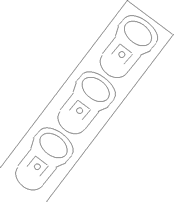 6. The pull tabs are made from a narrow coil of aluminium or steel. The strip is first pierced and cut. Then the tab is formed in two further stages before being joined to the can end.
6. The pull tabs are made from a narrow coil of aluminium or steel. The strip is first pierced and cut. Then the tab is formed in two further stages before being joined to the can end.
拉环由窄铝片或钢片制成。首先对片材进行打孔和切割,然后进行进一步的加工
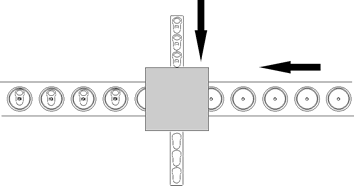 7. The ends pass through a series of dies which score them and attach tabs, which are fed in from a separate source.
7. The ends pass through a series of dies which score them and attach tabs, which are fed in from a separate source.
罐盖通过一系列的模具进行刻痕,拉环进行进一步的成型,然后拉环被加载到罐盖上
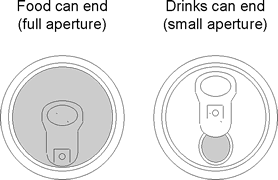 8. The final product is the ring pull end.
8. The final product is the ring pull end.
最终形成带拉环的罐盖(食品罐全开盖和饮料罐小开口盖)
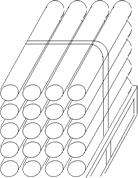 9. The finished ends, ready for capping the filled cans, are packaged in paper sleeves and palletised before despatch to the filling plant.
9. The finished ends, ready for capping the filled cans, are packaged in paper sleeves and palletised before despatch to the filling plant.
成品罐盖被包装在纸管中堆垛运往灌装厂,以备加载到灌装后的罐体上




